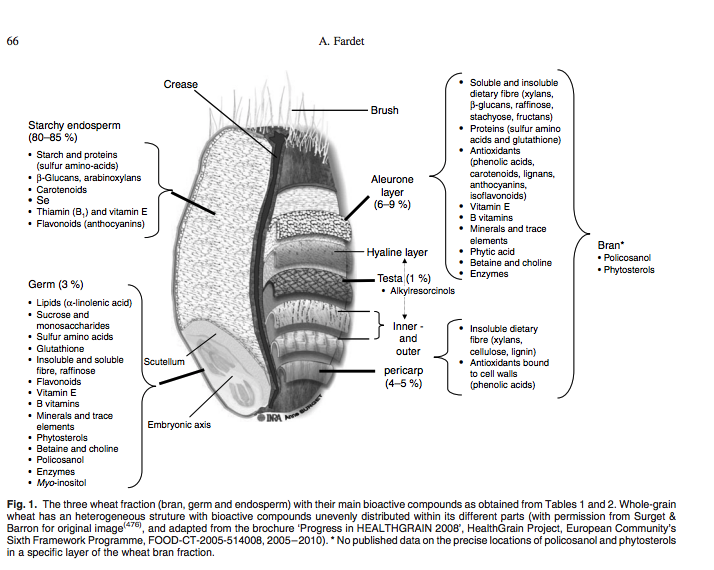A Gluten-Free Reality Check
- At August 17, 2015
- By Katherine
- In Articles, News
 0
0
 A whopping 21 percent of Americans are currently making an active attempt to eat gluten-free, according to a Gallup poll published July 23. That dwarfs the 1 percent of the U.S. population diagnosed with celiac disease, the only medical condition that requires gluten-free products for someone with the disease to live a healthy life.
A whopping 21 percent of Americans are currently making an active attempt to eat gluten-free, according to a Gallup poll published July 23. That dwarfs the 1 percent of the U.S. population diagnosed with celiac disease, the only medical condition that requires gluten-free products for someone with the disease to live a healthy life.
More and more Americans are on the anti-wheat warpath trend, as the label “gluten free” appears on everything from craft beer to cat food. For those with celiac disease, a life-threatening autoimmune disorder that destroys the gastrointestinal tract, going gluten-free is critical to avoid damage to the small intestine. For everyone else, though, it is an unnecessary, and – potentially unhealthy, diet.
The gluten-free industry
Such facts haven’t stopped the food industry from taking advantage of the trend, and gluten-free products have grown to represent a $9 billion market in 2014, according to the Burdock Group, which specializes in food market research, among other issues.
Gluten-free foods, especially refined foods processed to make them gluten-free (many made with potato starch or rice starch), cheat the consumer out of the many health benefits of whole grains — such as wheat, barley and rye — and can be seriously lacking in critical nutrients such as fiber iron, zinc, folate, niacin, thiamine, riboflavin, calcium, vitamin B12, phosphorus, fiber and iron.
A whole grain contains all three parts of a grain: the bran, germ and endosperm, as opposed to a refined grain which only contains the endosperm. The nutritional riches are mostly found in the bran and the germ. Decades of research, conducted predominantly on gluten-containing whole wheat, according to Joanne Slavin a professor in the department of food science and nutrition at the University of Minnesota in St. Paul, has found that people who eat whole grains, containing all three parts of the grain, are less likely to be overweight or have diabetes, heart disease or even many cancers, including colorectal cancer, and head and neck cancer in women.
“Whole grain cereals can protect the body against the increased oxidative stress that is involved and/or associated with all the major chronic diseases: metabolic syndrome, obesity, diabetes, cancers, and cardiovascular disease,” according to a comprehensive review in Nutrition Research Reviews. “Whole-grain cereals are good sources of antioxidants (thirty-one compounds or groups of compounds are listed picture above). Some specific mechanisms are today well recognized. For example, food structure influences satiety and the slow release of sugars recommended for type 2 diabetes. Dietary fiber improves gut health, and the antioxidant and anti-inflammatory properties of most phytochemicals can help prevent cancer and cardiovascular disease.
The U.S. Dietary Guidelines Advisory Committee, a group of scientists convened to offer nutrition recommendations for Americans to the federal government, said dietary patterns of the American public are suboptimal and are causally related to poor individual and population health and higher chronic disease rates.” The scientists recommended diets higher in fruits, vegetables, and whole grains than is currently consumed.
“Across all ages and both sexes, the US population does not meet the goal for whole grain intake, The inadequate intake of whole grains leads to underconsumption of several … nutrients of public health concern. “
Most gluten-free processed foods are not made with nutrient-rich, health-protecting whole grains. Furthermore, the gluten-free label has very little to do with the nutritional value of a food. French fries, and many candies, for example, are naturally gluten-free.
People without celiac disease who follow a gluten-free diet (many of whom aren’t even aware of what gluten is or what contains gluten, according to a hilarious recent Jimmy Kimmel piece) have been known to cite numerous reasons for doing so. A common one is a feeling of lethargy or ill health that has come to be associated with eating gluten. However, the feeling of wellness that many attribute to the removal of gluten from their diets is more likely due to the absence of the refined carb- and sugar-laden snacks and desserts that happen to contain the protein (so why not simply remove those foods but keep the healthy gluten-containing foods?).
If you are concerned that you may have celiac disease, you should have your doctor, preferably a gastroenterologist, perform an intestinal biopsy — and you shouldn’t cut gluten until you know for sure that you need to.
Celiac disease cannot be self-diagnosed, and a patient must be eating gluten for the disorder to be properly identified. Until then, you should treat the gluten-free trend as any other fad diet: Don’t get sucked in by the hype.
For more fabulous tips and simple, effective ways to lose weight,
buy her book, Diet Simple!









